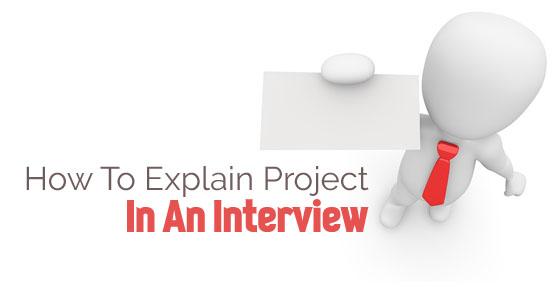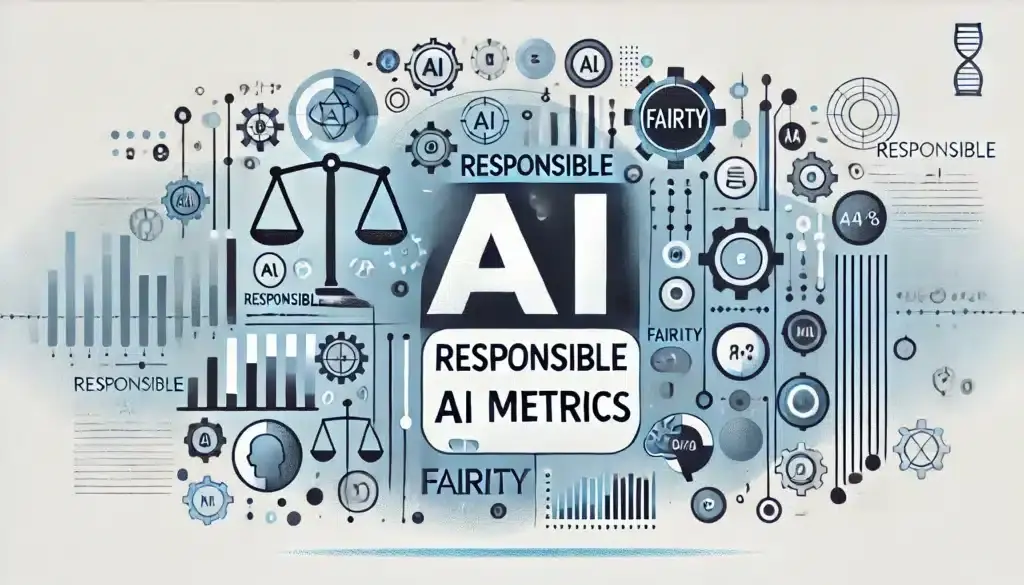How Top ML Engineers Prepare Smarter, Not Harder
If you’ve been prepping for ML interviews and still feel like you’re “studying everything but mastering nothing,” you’re not alone.
The truth?
Most engineers spend 80% of their time on topics that contribute less than 20% to their interview success.
In an era where ML interviews now span coding, system design, case studies, and applied reasoning, you can’t afford to brute-force your prep anymore.
You need leverage, and that comes from applying the Pareto Principle (the 80/20 rule) to your preparation.
80% of your interview success will come from 20% of your focused, high-yield preparation.
This blog will show you exactly how to find that 20%, prioritize it, and execute your prep with surgical efficiency, the way senior ML engineers at FAANG, OpenAI, and Anthropic do.
Section 1 - Why Most ML Candidates Waste Time (and Don’t Realize It)
Walk into any ML prep community and you’ll find the same pattern:
- Dozens of candidates endlessly revising gradient descent derivations.
- Others memorizing obscure algorithms they’ll never discuss in interviews.
- Some obsessing over leetcode, while failing to articulate real-world ML decisions.
This isn’t laziness, it’s information overload.
The modern ML ecosystem moves faster than any single prep guide can cover.
But interviewers aren’t assessing encyclopedic knowledge.
They’re evaluating:
- Reasoning clarity - can you break down complex ML trade-offs?
- Practical intuition - do you know when to use what?
- System thinking - can you integrate ML into production contexts?
That means 80% of your “textbook prep” has low interview ROI.
The most common time traps?
- Studying every paper on attention mechanisms when you can’t yet explain feature engineering trade-offs.
- Diving into reinforcement learning before mastering supervised and unsupervised learning pipelines.
- Solving 300 leetcode problems when you’ll be asked only 5–10 conceptual coding tasks.
In short, most ML prep fails not from lack of effort, but from lack of leverage thinking.
Check out Interview Node’s guide “How to Think Aloud in ML Interviews: The Secret to Impressing Every Interviewer”
Section 2 - The 80/20 Framework for ML Interview Success
Every ML interview follows the same hidden pattern, whether it’s Google, OpenAI, or Anthropic.
Interviewers aren’t looking for perfection across every subfield.
They’re looking for fluency in fundamentals and clarity in application.
The best candidates know this: they stop studying everything and start studying what compounds.
The Pareto Principle, when applied to ML interviews, means:
80% of your success will come from mastering the 20% of concepts and patterns that show up consistently, across coding, design, and reasoning rounds.
Let’s map that framework.
a. Identify the 20% That Actually Drives Interview Performance
Through hundreds of Interview Node candidate debriefs and FAANG recruiter insights, here’s how ML interviews break down by weight and impact:
| Interview Dimension | Time Spent (Typical) | Actual ROI on Success | Why It Matters |
| Core ML Intuition & Trade-offs | 10% | 40% | Tests depth, reasoning, and practical awareness |
| System Design (ML Pipelines) | 20% | 25% | Evaluates ability to scale and productionize ML |
| Coding (DSA + Implementation) | 40% | 15% | Tests structure, not competitive programming |
| Business & Impact Reasoning | 10% | 10% | Signals maturity and stakeholder thinking |
| Communication & Structure | 10% | 10% | Converts technical clarity into persuasion |
| Misc. (Research theory, niche models) | 10% | <5% | Rarely asked, low correlation with offers |
That’s your 80/20 map in numbers.
In short:
- Core ML intuition → most leveraged.
- Pipeline/system design reasoning → second-highest ROI.
- Communication clarity → the invisible multiplier.
Everything else is diminishing returns.
Check out Interview Node’s guide “End-to-End ML Project Walkthrough: A Framework for Interview Success”
b. Core ML Concepts - The 20% of Knowledge That 80% of Questions Come From
Here’s the paradox: interviewers rarely ask you to derive loss gradients or write matrix calculus on the board.
They ask about reasoning.
The 20% of topics that deliver 80% of success in ML interviews include:
- Bias–Variance Tradeoff - understanding under/overfitting intuitively.
- Evaluation Metrics - precision, recall, AUC, F1; choosing based on context.
- Feature Engineering & Data Quality - how preprocessing impacts performance.
- Model Selection - how to pick between tree-based models, linear models, and neural nets.
- Model Interpretability - how to explain predictions in business terms.
- Deployment & Monitoring - understanding drift, versioning, and feedback loops.
If you can explain why you chose X over Y and how you’d iterate in production, you already outperform 70% of applicants.
“Strong candidates don’t know more models. They know more about when models matter.”
c. The 20% of Practice That Builds 80% of Confidence
You can’t memorize your way to fluency, you simulate your way there.
Top candidates focus their practice not on content quantity, but on simulation frequency.
Here’s the 80/20 prep ratio:
- 20% → Study new concepts.
- 80% → Practice reasoning aloud through problems you already know.
Why?
Because confidence comes not from knowledge, but from retrieval fluency.
The human brain builds confidence through successful recall under pressure.
That’s why your 3rd explanation of bias–variance tradeoff sounds 10× better than your first.
So instead of spending another weekend watching theory videos, record yourself explaining:
“How would I detect data leakage in a production ML model?”
Listen back. Refine your phrasing. Repeat.
That’s how you turn knowledge into performance.
d. Focus on the “Integration Zone”, Where Skills Overlap
The secret advantage of top candidates is interdisciplinary overlap.
Rather than studying isolated domains, they focus on integration points, where multiple interview dimensions converge:
| Integration Zone | Example Question | Skills Tested |
| ML Design + Coding | “Implement an online learning system for recommendations.” | Reasoning, structure, efficiency |
| ML Intuition + Business | “How would you measure success of a fraud model?” | Metrics, impact awareness |
| ML Ops + Monitoring | “How do you detect model drift post-deployment?” | Systems thinking |
| Behavioral + Technical | “Tell me about a time your model underperformed.” | Ownership, iteration speed |
Focusing on these cross-skill overlaps gives exponential prep ROI, because each exercise reinforces multiple evaluation areas.
That’s how senior-level candidates reduce 6 months of prep into 6 weeks, by focusing on intersections, not silos.
e. The Mindset Shift: Learn to Think Like an Evaluator
If you want to hack the 80/20 rule at the deepest level, think like the person across the table.
Interviewers don’t evaluate what you know, they evaluate how you reason when you don’t know.
They’re not grading recall. They’re grading cognitive composure.
So before you study any new topic, ask yourself:
“Would understanding this make me better at reasoning out loud?”
If the answer is no, skip it, it’s noise.
That’s how you start prepping like an evaluator, not an applicant.
Because ML interviews aren’t designed to find perfect candidates, they’re designed to find calm, structured thinkers who can make intelligent trade-offs in imperfect conditions.
That’s the 20% that changes everything.
Key Takeaway
The 80/20 rule isn’t just time management, it’s mental decluttering.
You’re not optimizing for what to memorize, you’re optimizing for what moves the needle.
If you anchor your prep around:
- Core ML intuition
- System-level integration
- Real-world reasoning fluency
you’ll deliver 80% of what top companies actually care about, in 20% of the time.
“Preparation doesn’t favor the hardest worker. It favors the smartest optimizer.”
Section 3 - The 80/20 Breakdown of ML Topics (What to Study, What to Skip, and Why)
If you’ve ever opened a machine learning syllabus and felt like drowning, you’re not alone.
Between linear regression and transformers, there’s enough material to fill a PhD program, yet only a fraction actually matters for interviews.
The challenge isn’t to learn everything, it’s to learn what matters first and deepest.
Applying the 80/20 rule here means identifying:
- The vital 20% of topics that show up in 80% of interviews.
- The low-yield 80% that’s intellectually interesting but practically irrelevant to most roles.
Let’s break it down tier by tier.
a. Tier 1 - The High-ROI Core (Study Deeply)
These topics form the foundation of nearly every ML interview, from FAANG to fintech.
They are the 20% of subjects that drive 80% of reasoning performance.
| Core Area | Subtopics | Why It’s High ROI |
| Supervised Learning Fundamentals | Linear/Logistic Regression, Decision Trees, Random Forests | Builds conceptual grounding for model reasoning questions. |
| Evaluation Metrics | Precision, Recall, F1, ROC-AUC, Confusion Matrix | Used in >70% of ML case questions. |
| Feature Engineering & Data Prep | Encoding, Imputation, Scaling, Feature Selection | The top differentiator between strong and average candidates. |
| Bias–Variance Tradeoff | Overfitting vs. underfitting reasoning | Common behavioral + technical hybrid question. |
| Regularization & Optimization | L1/L2, dropout, early stopping, gradient descent intuition | Signals understanding beyond “black box” ML. |
| Error Analysis | Data vs. model issues | Critical for ML debugging discussions. |
Why this tier matters:
Interviewers want to see how you think about model behavior under real constraints.
This tier tests understanding, not memorization, it’s about reasoning through why one model works better than another.
Example question:
“Your logistic regression model performs worse than a random forest. What’s your debugging process?”
This one question touches bias–variance, regularization, feature interactions, and interpretability, all Tier 1 material.
Check out Interview Node’s guide “Comprehensive Guide to Feature Engineering for ML Interviews”
b. Tier 2 - The Integrative Layer (Study Strategically)
These topics have moderate ROI, they show up less frequently but have high payoff if mastered.
You don’t need to memorize math, you need conceptual fluency.
| Topic Group | Key Concepts | Why It Matters |
| Unsupervised Learning | K-Means, PCA, Hierarchical Clustering | Common for case questions involving customer segmentation or anomaly detection. |
| Ensemble Learning | Bagging, Boosting (XGBoost, LightGBM), Stacking | Top companies love this topic because it blends statistical intuition with performance tuning. |
| Model Explainability | SHAP, LIME, feature importance | Required for regulated domains (finance, healthcare). |
| ML System Design | Data flow, feature stores, model serving, monitoring | High ROI for senior or applied ML engineer roles. |
| Cross-Validation & Sampling | k-Fold, train/validation/test splits | Shows awareness of reliable evaluation methodology. |
How to study this layer efficiently:
- Focus on use cases, not equations.
- Practice verbal reasoning: “Why does XGBoost generalize better than a plain random forest?”
- Simulate trade-off discussions: “When would PCA be inappropriate?”
Candidates who can reason through design constraints in these areas project senior-level thinking, even at mid-level roles.
c. Tier 3 - The Specialist Zone (Learn Only If Time Allows)
This is the intellectual playground, fascinating but rarely evaluated directly.
Studying these deeply before mastering Tiers 1–2 is a classic low-ROI mistake.
| Topic | When It’s Worth It | Why It’s Often Overkill |
| Deep Learning Architectures | If interviewing for CV/NLP-heavy roles | Limited scope in generalist ML roles. |
| Reinforcement Learning | Research or robotics-focused jobs | Complex, rarely part of mainstream hiring loops. |
| GANs, Autoencoders, Transformers | Advanced AI/LLM teams | Excellent for curiosity, not early prep. |
| Probabilistic Graphical Models | Research, data science PhD roles | Low occurrence in applied ML interviews. |
| Time Series Forecasting | Fintech, logistics, IoT companies | Niche but valuable when relevant. |
This doesn’t mean ignore them entirely, it means sequence them correctly.
Think of them as your advanced electives, not your core curriculum.
If you’re interviewing at OpenAI or DeepMind, you’ll dive deeper here.
But for 90% of ML roles, Tier 1 + Tier 2 mastery beats shallow exposure to Tier 3.
d. Tier 4 - The Noise Layer (Minimize or Skip)
Yes, it exists, entire sections of content that look impressive but almost never appear in interviews.
| Low-ROI Focus Area | Why It’s Not Worth It |
| Manual derivation of every ML formula | Interviewers care about intuition, not algebra. |
| Obscure academic papers | Wastes time, focus on explaining existing tools instead. |
| Kaggle-only hyperparameter tuning tricks | Too context-specific, poor generalization. |
| Memorizing every ML library | Tools change; reasoning doesn’t. |
| Competing on syntax speed | Interviewers want clarity, not code golf. |
If it doesn’t improve how you reason, communicate, or debug, it’s not worth your bandwidth.
“Depth in 20% of topics beats surface-level knowledge across 100%.”
e. A Practical 80/20 Study Schedule
Here’s how top-performing candidates structure prep around this Pareto breakdown:
| Focus Area | Time Allocation | Goal |
| Core ML (Tier 1) | 40% | Concept mastery through reasoning and case simulation. |
| Integrative ML (Tier 2) | 30% | System and scenario fluency. |
| Specialist (Tier 3) | 20% | Targeted exploration for relevant roles. |
| Practice & Feedback | 10% | Mock interviews, reflection, and performance tracking. |
This keeps your prep plan both deep and flexible.
If you have six weeks to prepare, you’ll spend:
- 2.5 weeks on Tier 1 reasoning
- 2 weeks on Tier 2 integration
- 1 week exploring Tier 3 (if applicable)
- 0.5 week consolidating and simulating full interviews
That’s how senior ML engineers prepare with precision, not panic.
Key Takeaway
Your goal isn’t to know everything, it’s to explain anything clearly under pressure.
The 80/20 mindset protects you from drowning in noise.
When you focus your prep on Tier 1 + Tier 2, your returns multiply.
You’ll sound more structured, more confident, and more senior, even if you’ve studied less than others.
“Success in ML interviews isn’t about coverage, it’s about comprehension depth.”
Section 4 - The 80/20 Study Strategy: How to Plan, Schedule, and Measure Your Prep Like a Data Scientist
You wouldn’t train a model without tracking performance.
So why prepare for ML interviews without tracking ROI?
Most candidates treat prep as an open-ended marathon, study until it “feels” enough.
But in high-stakes ML hiring (Google, Meta, Anthropic, OpenAI, Tesla), feeling ready and being ready aren’t the same.
The best engineers don’t study more, they measure their prep like an experiment.
The 80/20 approach turns preparation into an optimization problem:
“How can I get 80% of results from 20% of effort, and prove it through feedback data?”
Let’s break this into a structured study system that mimics an ML lifecycle: Plan → Train → Evaluate → Optimize.
a. Step 1 - Plan: Define Your Objective Function
Before you start studying, define what success looks like.
For ML interviews, your goal isn’t just “pass the rounds”, it’s to communicate structured reasoning under uncertainty.
Define your interview success function as:
Confidence Score = (Reasoning Clarity × Content Depth × Calmness) ÷ Cognitive Load
You’ll optimize this metric every week.
To break it down:
- Reasoning Clarity: How clearly can you explain trade-offs and decisions?
- Content Depth: How well do you understand why algorithms behave a certain way?
- Calmness: How effectively do you regulate anxiety during questions?
- Cognitive Load: How much mental effort it takes to articulate fluently.
Your goal is to raise clarity, depth, and calmness, while lowering cognitive strain.
That’s what efficient prep looks like.
b. Step 2 - Train: Build Your 80/20 Weekly Schedule
Here’s the five-week, Pareto-optimized prep plan Interview Node recommends, used by FAANG finalists who balance full-time jobs with interview prep.
| Week | Focus Area | Objective | Example Practice Tasks |
| Week 1: Core ML Foundations | Supervised learning, metrics, bias–variance, data prep | Achieve reasoning fluency | Explain logistic regression aloud; analyze precision vs recall trade-offs |
| Week 2: Feature Engineering + Ensemble Learning | XGBoost, LightGBM, data leakage, importance metrics | Integrate intuition & structure | Design a small Kaggle-like case from scratch and discuss reasoning |
| Week 3: ML System Design + Evaluation | Pipelines, serving, drift detection | Learn to reason about end-to-end pipelines | Sketch a model lifecycle; explain drift mitigation |
| Week 4: Communication & Behavioral Rounds | Explain decisions like a senior engineer | Combine technical depth with empathy | Practice answering “Tell me about a failure” or “Explain this to a PM” |
| Week 5: Mock Interview Loop | Full simulations under time & stress | Measure performance and identify weak points | Record and analyze 3 full-length mocks; self-score on clarity, calmness, impact |
You’ll notice something critical:
Only 20% of this plan is new theory.
The other 80% is reinforcement, articulation, and reflection.
That’s how real learning sticks, through retrieval, not rereading.
Check out Interview Node’s guide “Behavioral ML Interviews: How to Showcase Impact Beyond Just Code”
c. Step 3 - Evaluate: Measure Your ROI Weekly
You can’t improve what you don’t measure.
Each week, evaluate your progress using a simple self-assessment matrix:
| Dimension | Metric | How to Measure | Goal |
| Reasoning Clarity | % of answers explained without rambling | Review recordings | ≥ 85% |
| Knowledge Retention | # of topics recalled correctly under time | Flash quiz | ≥ 90% |
| Stress Regulation | Average heart rate drop during practice | Smartwatch / timer breathing | 10–15% improvement |
| Communication Confidence | Voice tone stability (no abrupt pitch shifts) | Speech analysis apps (Yoodli, Orai) | <10% variation |
| Learning Efficiency | Hours spent per concept understood deeply | Daily log | ↓ over time |
Tracking these metrics converts subjective “I feel ready” into quantitative self-optimization.
d. Step 4 - Optimize: Apply Feedback Like a Data Scientist
Each week, run a “retrospective loop”, similar to tuning a model:
- Collect performance data.
- Review your recordings or mock feedback.
- Identify where you hesitated or overexplained.
- Diagnose the root cause.
- Was it a concept gap or a composure issue?
- Did you lose clarity due to stress or uncertainty?
- Iterate small.
- Instead of cramming new material, refine one old answer with better structure.
- Retest.
- Re-run the same question in simulation next week to confirm improvement.
Over time, this loop builds what neuroscientists call predictive confidence, your brain learns to expect control instead of chaos.
It’s the same principle elite athletes use when training under pressure: controlled micro-failure → measured recovery → reinforced mastery.
Check out Interview Node’s guide “How to Decode Feedback After a Failed ML Interview (and Improve Fast)”
e. Step 5 - Calibrate Effort vs. Return
After three weeks, conduct a self-ROI audit:
- Which topics improved my fluency the most?
- Which topics feel mastered but rarely appear?
- Which activities (mock interviews, reading, journaling) correlate with the highest recall?
Cut anything that doesn’t correlate with performance improvement.
That’s how you maintain Pareto focus long-term.
The goal isn’t to study more; it’s to study strategically until diminishing returns appear.
Here’s what typical patterns show:
- High ROI: Explaining past projects, debugging exercises, simulated trade-off discussions.
- Medium ROI: Case reading, practice datasets.
- Low ROI: Endless note-taking or passive theory review.
Once you identify what moves your score, double down, just like tuning learning rates in a model.
f. Step 6 - Create Your “Final Sprint” Routine
In your final week, stop learning and start performing.
Confidence in ML interviews isn’t about having more knowledge, it’s about having accessible knowledge.
Your last week should focus 100% on recall speed, flow, and rhythm.
Try this final-week routine:
- Day 1–2: Explain one full ML project, end to end, out loud.
- Day 3–4: Run 2 mock interviews (1 technical, 1 behavioral).
- Day 5–6: Record yourself and fix pacing issues.
- Day 7: Rest and visualize the interview flow (literally picture yourself pausing, reasoning, smiling).
That final step, visualization, has a measurable impact.
A Stanford study showed that candidates who practiced visualization improved verbal coherence and confidence by 17% compared to those who didn’t.
Key Takeaway
You don’t need more hours. You need better feedback.
Applying the 80/20 rule to ML interview prep isn’t laziness, it’s precision engineering.
You’re not skipping work, you’re cutting cognitive noise.
The smartest candidates prepare like data scientists:
- They define their metrics.
- Track their performance.
- Adjust based on signal, not guilt.
“Preparation isn’t about doing everything. It’s about identifying what moves the loss curve down fastest.”
Conclusion - The 80/20 Mindset Is the Real Competitive Advantage
Most engineers believe ML interview prep is a race, hours, pages, problem sets.
But in reality, it’s a system optimization challenge.
You’re not training a model to memorize everything.
You’re training your brain to identify what actually improves performance.
The 80/20 rule is more than a productivity hack, it’s a way of thinking that mirrors how great engineers approach any complex system:
- Simplify the problem.
- Find the leverage points.
- Iterate intelligently.
In interviews, those leverage points are:
- Core ML reasoning (not advanced math)
- Clear communication (not verbosity)
- Real-world intuition (not textbook recall)
- Emotional regulation (not blind confidence)
If you can master those four areas, you’re already in the top 10% of candidates.
Because interviewers don’t want the smartest person in the room, they want the person who can make complexity clear, fast.
That’s what 80/20 preparation gives you: the ability to perform under time, context, and ambiguity.
So the next time you open your prep planner, ask yourself:
“What’s the smallest change I can make that will give me the biggest improvement?”
That’s how senior ML engineers think.
That’s how offers are earned.
“Efficiency isn’t about doing less. It’s about eliminating what doesn’t create impact.”
Check out Interview Node’s guide “The Hidden Metrics: How Interviewers Evaluate ML Thinking, Not Just Code”
FAQs: Applying the 80/20 Rule to ML Interview Prep
1. How do I figure out which 20% of topics matter most for my target company?
Start by analyzing the role focus and product domain.
For example:
- Meta/LinkedIn: recommendation systems, metrics reasoning, data pipelines.
- Amazon: business-driven ML (forecasting, personalization, supply chain optimization).
- OpenAI/Anthropic: LLM evaluation, data governance, scalable model architecture.
Use public job descriptions and employee interview posts to reverse-engineer high-frequency themes.
Then match your study time to those, not generic ML theory.
2. Should I still practice leetcode if I’m preparing for ML interviews?
Yes, but selectively.
You don’t need to grind 500 problems.
Focus on:
- Arrays, hash maps, trees
- Graph traversal
- Dynamic programming (light touch)
Then spend 80% of your time applying that logic to ML-context coding questions, like implementing gradient descent or evaluating model metrics in code.
Your goal is reasoning fluency, not memorization.
3. How long should I realistically prepare using the 80/20 approach?
For working professionals, 6–8 weeks of structured prep (1–2 hours per day) is enough to reach high confidence, provided you follow Pareto principles:
- Weeks 1–2 → Core ML fundamentals
- Weeks 3–4 → Pipeline/system reasoning
- Weeks 5–6 → Behavioral integration & mock interviews
If you study everything, it takes 6 months.
If you study strategically, it takes 6 weeks.
4. How do I avoid burnout during prep?
Burnout happens when effort doesn’t create visible progress.
The solution is feedback loops:
- Record answers and review weekly improvements.
- Visualize progress (accuracy of recall, fluency of speech).
- Celebrate small wins, every new level of clarity compounds.
You’re building a mental model, not cramming for an exam.
Treat prep as iteration, not punishment.
5. I feel anxious during interviews, can the 80/20 rule help with confidence?
Absolutely.
The 80/20 rule applies to mindset too:
- 20% preparation (core concepts) → 80% reduction in anxiety.
- Focused clarity reduces overwhelm.
Confidence doesn’t come from knowing everything, it comes from knowing you’ve mastered the right things.
6. What’s the best way to measure if my preparation is “working”?
Quantify your growth like you’d monitor a model:
- Track recall speed: “How long does it take me to explain X concept?”
- Track clarity: “Did I explain trade-offs in under 2 minutes?”
- Track retention: “Can I recall 10 key metrics without notes?”
Improvement in consistency and delivery matters more than breadth.
7. Should I study LLMs, transformers, or GNNs for 2025 interviews?
Only if your target companies explicitly mention them.
Otherwise, focus on fundamentals of generalization, data quality, and system design, because even LLM and GNN questions are built on those principles.
When asked, “How would you evaluate an LLM’s quality?”, what interviewers really test is your reasoning framework, not transformer math.
8. How can I prioritize when my schedule is packed (work, family, etc.)?
Use the “One Concept, One Case” rule.
Every day, master one concept and apply it to one real case:
- Day 1: Precision vs recall → Fraud detection
- Day 2: Regularization → Overfitting in demand forecasting
- Day 3: Model drift → Real-time recommendation
In 3 weeks, you’ll cover every Tier-1 topic with practical recall.
9. How do I know when to stop studying and start interviewing?
When your answers sound structured, not rehearsed.
If you can explain:
- An ML project end-to-end
- Three trade-offs (accuracy vs interpretability, complexity vs latency, model vs data)
- One failure you learned from
—you’re ready.
Stop studying and switch to simulation mode, mock interviews and reflection.
10. What if I’m switching from software engineering to ML, how should I use 80/20 prep?
Your leverage is in your systems thinking.
Spend:
- 40% on data processing, feature engineering, and metrics.
- 30% on applied ML frameworks (Scikit-learn, PyTorch).
- 20% on model design and deployment pipelines.
- 10% on behavioral reasoning (communication, impact).
You’ll outshine theory-heavy candidates because you connect engineering rigor with ML execution.
Final Takeaway
The 80/20 rule isn’t about doing less, it’s about doing what actually compounds.
You can prepare for ML interviews endlessly and still feel lost, or you can prepare like an engineer:
- Measure input (time spent)
- Measure output (fluency gained)
- Cut waste
- Reinforce signal
That’s the mental model that separates professionals from perfectionists.
So as you plan your next week of prep, remember:
You don’t need to know everything.
You just need to know the 20% that drives the conversation forward.
“Preparation is infinite. Time is not. Pareto your way to clarity.”






